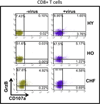The unmet need in the elderly: how immunosenescence, CMV infection, co-morbidities and frailty are a challenge for the development of more effective influenza vaccines
- PMID: 22289511
- PMCID: PMC3345132
- DOI: 10.1016/j.vaccine.2012.01.015
The unmet need in the elderly: how immunosenescence, CMV infection, co-morbidities and frailty are a challenge for the development of more effective influenza vaccines
Abstract
Influenza remains the single most important cause of excess disability and mortality during the winter months. In spite of widespread influenza vaccination programs leading to demonstrated cost-savings in the over 65 population, hospitalization and death rates for acute respiratory illnesses continue to rise. As a person ages, increased serum levels of inflammatory cytokines are commonly recorded (TNF-α, IL-1, IL-6). Termed "inflammaging", this has been linked to persistent cytomegalovirus (CMV) infection and immune senescence, while increased anti-inflammatory cytokines (IL-10, TGF-β) are possibly associated with more healthy aging. Paradoxically, a shift with aging toward an anti-inflammatory (IL-10) response and decline in the IFN-γ:IL-10 ratio in influenza-challenged peripheral blood mononuclear cells is associated with a decline in the cytolytic capacity of CD8+ T cells responsible for clearing influenza virus from infected lung tissue. Thus, it is seemingly counter intuitive that the immune phenotype of healthy aging predicts a poor cell-mediated immune response and more serious outcomes of influenza. Herein we postulate a mechanistic link between the accumulation of late-stage, potentially terminally differentiated T cells, many or most of which result from CMV infection, and the immunopathogenesis of influenza infection, mediated by granzyme B in older adults. Further, adjuvanted influenza vaccines that stimulate inflammatory cytokines and suppress the IL-10 response to influenza challenge, would be expected to enhance protection in the 65+ population.
Copyright © 2012 Elsevier Ltd. All rights reserved.
Conflict of interest statement
Figures





References
-
- Reichert TA, Simonsen L, Sharma A, Pardo SA, Fedson DS, Miller MA. Influenza and the winter increase in mortality in the United States, 1959–1999. Am J Epidemiol. 2004;160(5):492–502. - PubMed
-
- Fleming DM, Elliot AJ. The impact of influenza on the health and health care utilisation of elderly people. Vaccine. 2005 Jul 8;23(Suppl 1):S1–S9. - PubMed
-
- Thompson WW, Shay DK, Weintraub E, Brammer L, Cox N, Anderson LJ, et al. Mortality associated with influenza and respiratory syncytial virus in the United States. Jama. 2003;289(2):179–186. - PubMed
-
- Falsey AR, Hennessey PA, Formica MA, Cox C, Walsh EE. Respiratory syncytial virus infection in elderly and high-risk adults. N Engl J Med. 2005 Apr 28;352(17):1749–1759. - PubMed
-
- Ferrucci L, Guralnik JM, Pahor M, Corti MC, Havlik RJ. Hospital diagnoses, Medicare charges, and nursing home admissions in the year when older persons become severely disabled. Jama. 1997 Mar 5;277(9):728–734. - PubMed
Publication types
MeSH terms
Substances
Grants and funding
LinkOut - more resources
Full Text Sources
Other Literature Sources
Medical
Research Materials

